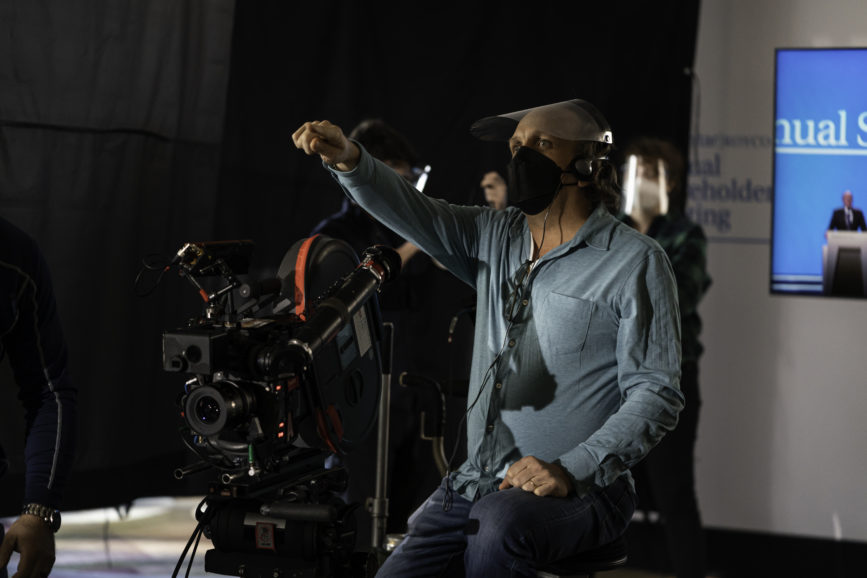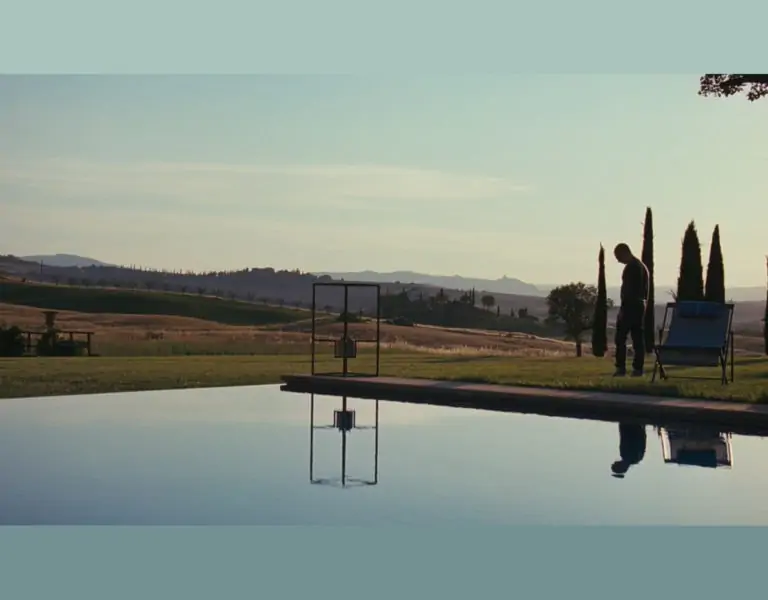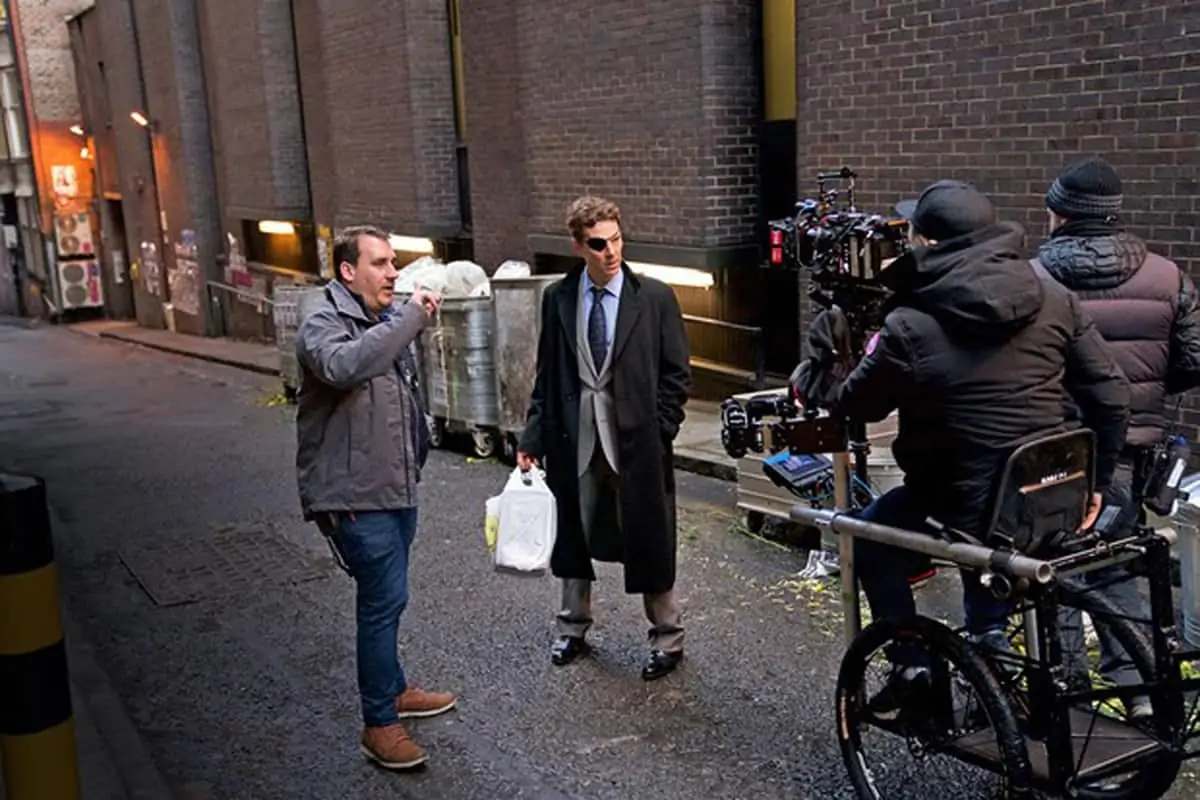FURY IN THE FAMILY
As Succession’s story of power, politics, and cutthroat family business continues to unfold, the shooting style of the cinematographers and their camera crew has needed to be as fast-paced as the series’ razor-sharp dialogue.
“I’m not sure this style would work with just any story as Succession follows a very haphazard family. It’s so energetic and constantly overlapping, demanding a unique shooting approach,” says Patrick Capone, one of the two cinematographers behind the latest series of the hit HBO comedy-drama.
Celebrated for its powerful performances and dazzling dialogue penned by creator and showrunner Jesse Armstrong (Fresh Meat, Peep Show), each episode demands the stellar cast’s cutting remarks and reactions be captured swiftly and often on the fly.
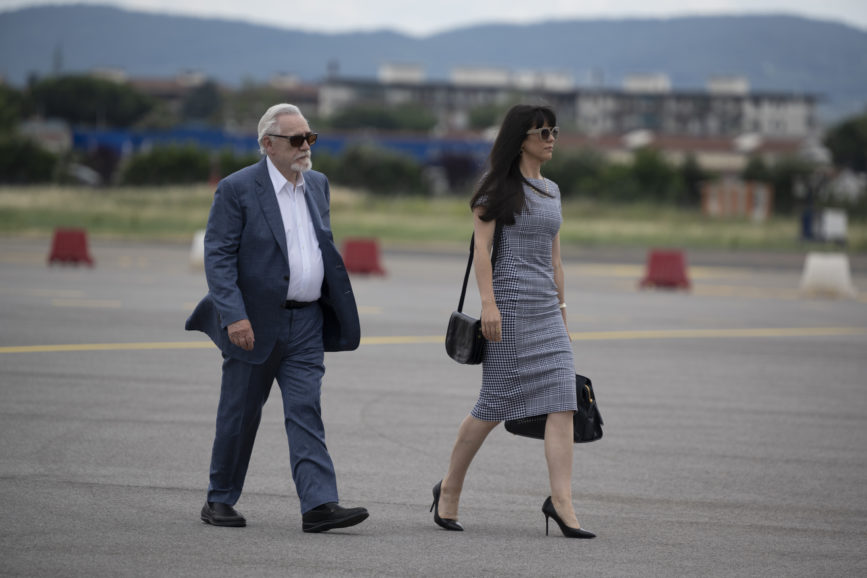
With season three, the high-speed story centring around the Roy family’s tumultuous business and personal relationships continues to evolve, encompassing new locations, and adding cameo appearances into the mix. The trademark power struggles, politics, and humorous and heart-breaking family dynamics remain, switching between moments of stillness and intensity.
The series’ success, Capone believes, often lies in its “lack of cinema and more photojournalistic, fly-on-the-wall documentary approach” where the captivating characters are in the spotlight. But there are still moments when the visual language becomes cinematic.
“At certain points, we might give the audience a rest from the sometimes-chaotic camera work,” says Succession co-cinematographer Christopher Norr. “That’s evolved over the seasons, and often sees us shift visual language within an episode for dramatic impact. Not that there isn’t enough of that in the acting and writing – it’s so good that you don’t want anything to detract attention.”
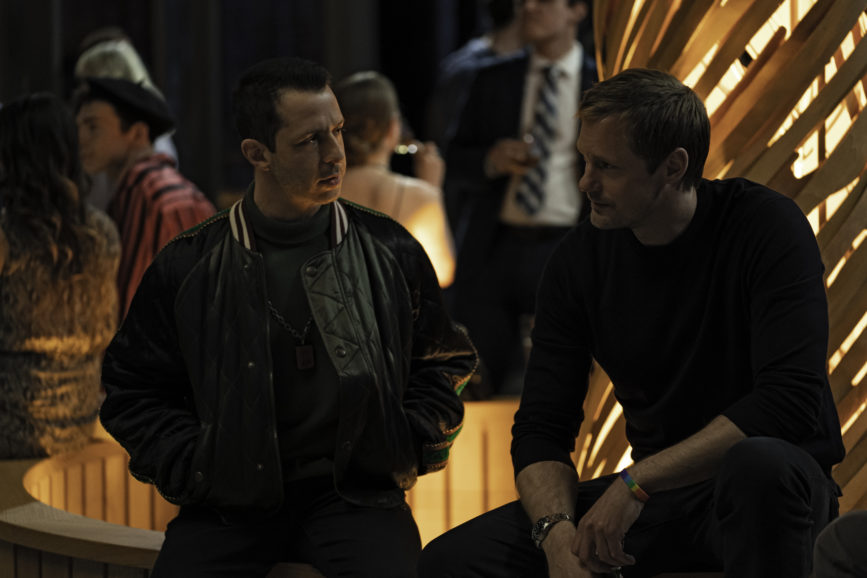
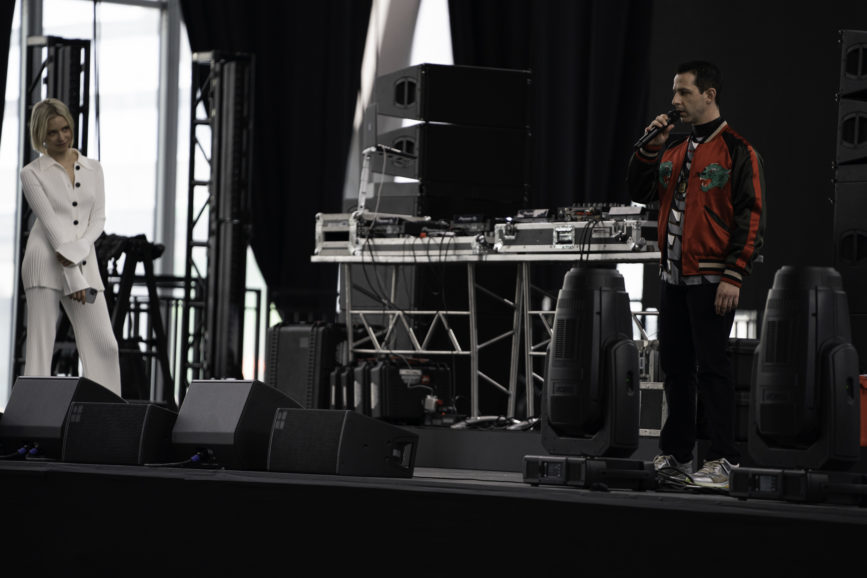
The co-cinematographers are extremely well versed in Succession’s unique approach, having been part of the tight-knit crew for most of the three seasons. After Andrij Parekh – now one of the series’ directors – shot the pilot and opening two episodes, with Adam McKay and Mark Mylod directing, Capone joined from the fourth episode and Norr came on board mid-way through the first season.
“Nothing’s planned, but there is a philosophy.”
Patrick Capone
“We shared what we liked about the first episodes and discussed the realistic style they wanted to adopt with Andrij and Mark and what we could bring to the table,” says Capone. “And we’re still having that conversation.”
But while some co-DP relationships could become competitive, New Yorkers Capone and Norr enjoy sharing the lensing of the rousing series, speaking the “same production language” and exchanging ideas. “We talk about our challenges and how best to steer the visual language as friends,” says Norr. “If Pat or I try something new, we’ll tell each other if it worked well.”

Before discussing each episode’s approach with the director, Norr breaks down a script into beats and how he wants to build tension or create stillness with camerawork in line with the episode’s arc, but being aware that the script is ever-changing, and improvisation is common.
Although collaborating on many episodes with director/executive producer Mylod and director Parekh – who is familiar with the shooting style from lensing the pilot – when working with directors who are new to the series, some can find mapping out gigantic scenes with many characters overwhelming.
When asked how to tackle this, Norr informs them that a scene often maps itself out. “We light a space and then the actors do something different in almost every take. The cameras constantly move while the operators and camera assistants do a dance with the cast.”
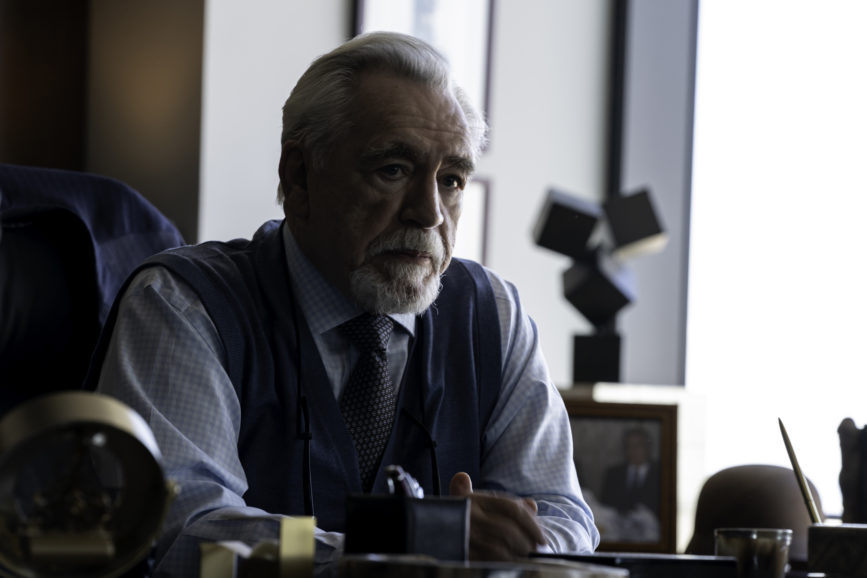
Capone adds: “And we don’t mark actors. Jeremy [Strong] (who plays Kendall Roy) once joked, ‘How am I going to go into another job where they actually tell me I have to hit a mark?’”
For scenes requiring two cameras, rather than shooting side by side, one camera is positioned in front and one at the side, and then they move back and forth, “creating a scheme that accommodates 250-degree shooting.”
That is the biggest challenge and one that would be impossible without the series’ extraordinary operators, Gregor Tavenner, Alan Pierce, and Ethan Borsuk. “They have tremendous eyes and hunt for what we need,” says Capone. “The operators, grip team led by Brendon Malone, and gaffer team led by Andy Day are all amazing. When we’ve travelled abroad to Scotland, Italy, and so on, and worked with different grip and electric crews, they have also been excellent.”
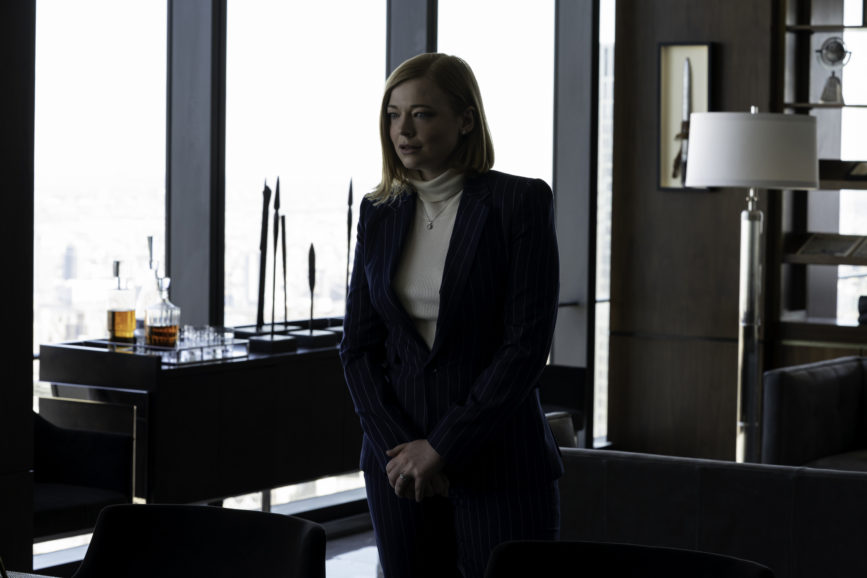
A spontaneous approach
For Capone, the series’ spontaneity and “even the occasional little mistakes” add to the visual language. As much as he and Norr discuss with the director whether to go with a long lens dolly, handheld, or Steadicam, “it’s not unusual to be in the second take of a scene and for Mark [Mylod] and I to look at each other and say, ‘This isn’t working. Let’s tear apart the track and try something else.’ That’s the liberating part – everyone’s on board, from Jesse [Armstrong] through to the camera assistants.”
A scene is captured from the first to last word, with most directors preferring to shoot the tighter coverage first and then drop back to film the wider pieces. Due to the series’ mixture of relationships, tensions, and conflicts, the method behind shooting each sequence is subjective, meaning sequences are often filmed from a specific character’s perspective.
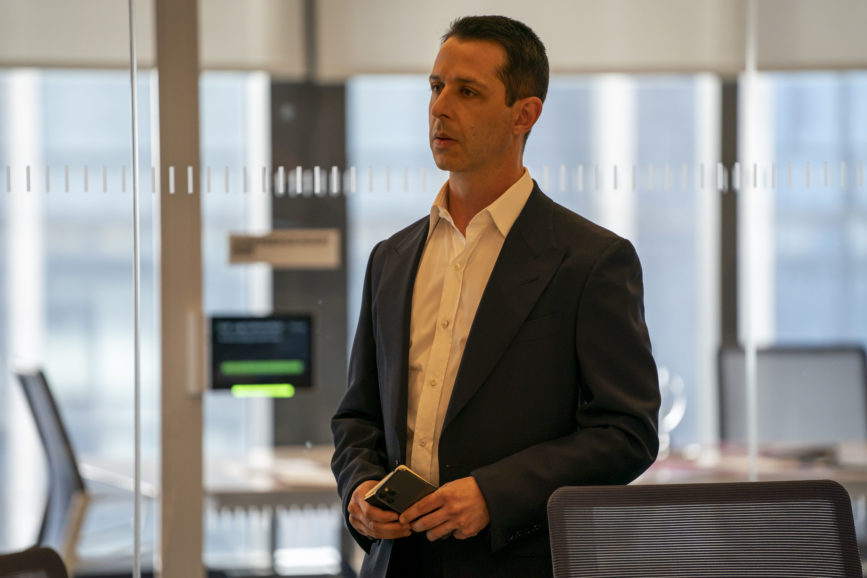
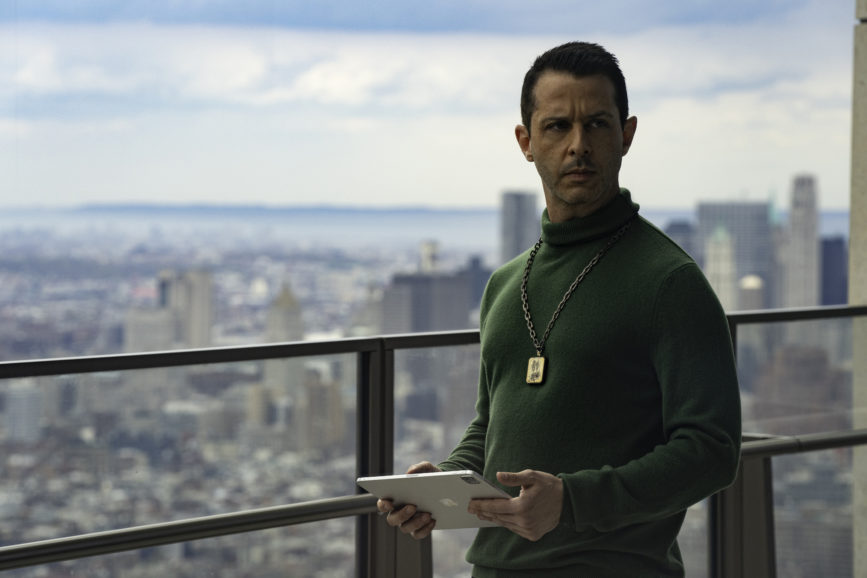
“Nothing’s planned, but there is a philosophy,” says Capone. “Our conversation with the director, operators, and camera assistants before the scene starts isn’t just about the words, it’s about the subplots within the scene. We don’t do overs and singles, block this side of the room, and then turn around.
“The actors love this approach, but it’s demanding. It all depends on the script and how much the actors are moving around. We shoot a lot of dinner or living room scenes that sometimes require a long lens dolly, so we can reach across people to capture those infamous reactions.”
The operators often prefer not to watch rehearsals, if they take place. That prevents them from foreseeing what will happen. “The series’ style is reactionary, and sometimes late reactionary,” says Norr. “And the fact the scenes constantly change lends itself to that. We all wear headsets but don’t rely on them. They’re there so if I see things the operators don’t, I can let them know. It could be a little smirk from Shiv (Sarah Snook), that might be hard to track when there are so many characters. We work together to see those moments.”
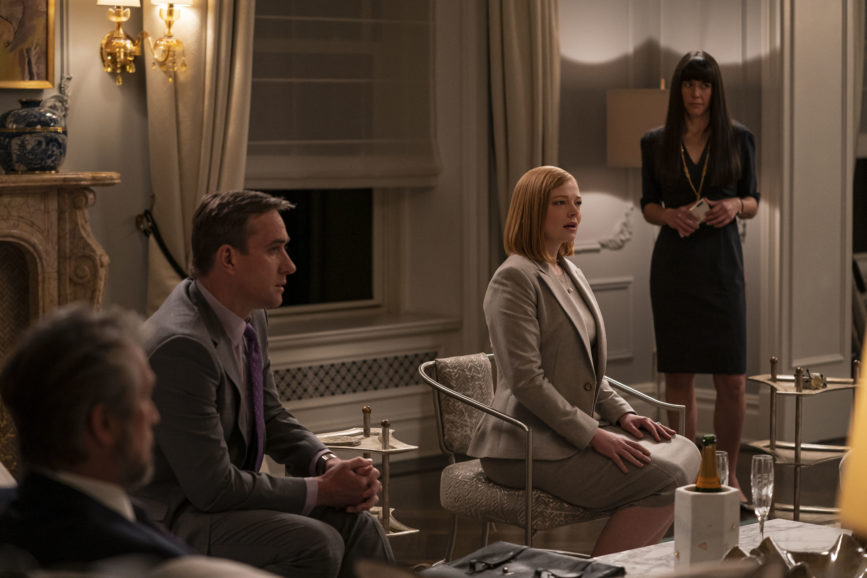
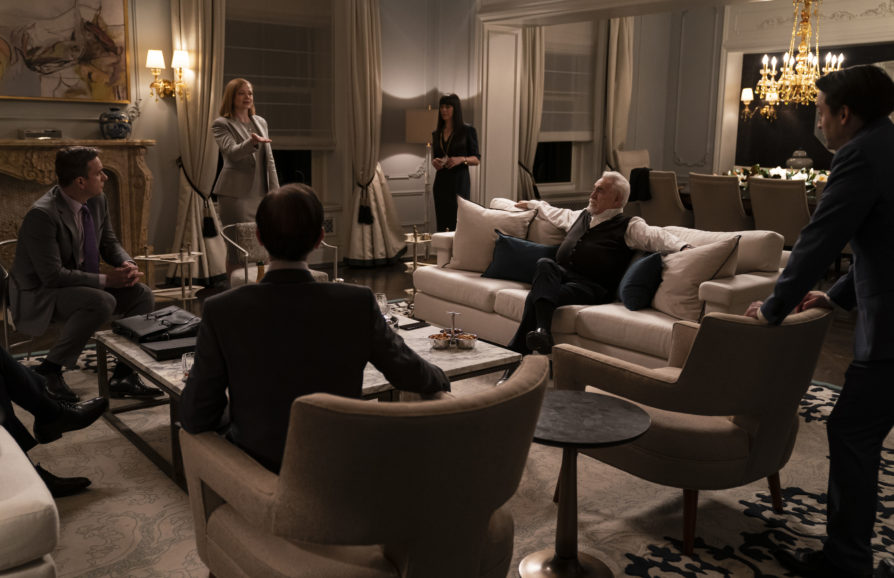
Developing Succession’s signature style has seen the operators master a raft of tricks and techniques. They might use adjustable height butt dollies or lay down dance floors so they can lean their body or slide over the shoulder enough to be in position with the foresight to throw focus to a character.
“Every take is different, and you don’t have to be on the actor who’s talking, which is liberating,” says Capone. “Normally, at the end of a take the script supervisor lets you know if you didn’t have an entire line. We don’t have rules like that on this show.”
But inevitably the pandemic caused some shifts in the way the cast and crew shot the third season. Whereas in season two, they would always finish shooting an episode they had started, in line with COVID protocols the third season began with smaller groups of actors and the larger office scenes requiring more extras were delayed. “We squeezed a lot in between the first spike and the Delta variant when we could expand to scenes with larger crowds, all captured safely of course,” says Capone.
While trying as much as possible to stick to their working practices while shooting throughout the pandemic, it was not always possible. “For the first time on this series, I shot an interior limo scene that was completely faked,” says Norr. “Jesse’s [Armstrong] stomach was probably turning because he hates that approach, but I felt the result was realistic.”

Discipline and focus
When the cinematographers were welcomed into the Succession family, they were delighted to also adopt its method of shooting on Kodak 35mm negative. “There were times in the series’ infancy when production thought only the pilot might be captured on film and then it would switch to digital, but fortunately this was rejected immediately by the creatives,” says Capone.
For both directors of photography, film brings a softness, a unique texture, and quality that is not seen in the more polished digital world. Capone especially loves the highlights and “how beautifully film reacts when shooting windows in a side-lit daylight scene.” The working practice when shooting on film is also more disciplined. “When you do the slate, everyone is focused. And it keeps me out of the DIT tent and on the set, lighting with a meter, and watching by eye.”
Norr agrees shooting on film keeps him and the crew more present, especially when shooting outside, which would normally require entering the tent to see an image because the sunlight interferes with the monitor. “Shooting on film, you know the monitor’s just for framing, so I don’t worry about it,” he says. “I’m right next to the camera looking with my eye or occasionally jumping on the camera myself.”
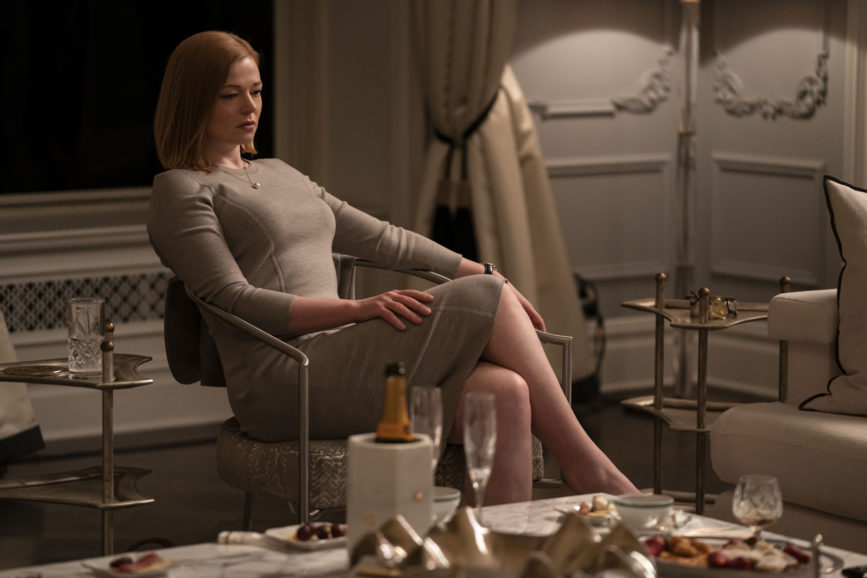

Film stock choice was based on the fastest and slowest film. Initially using the Kodak Vision3 500T 5219, Norr then also introduced the “beautiful” Vision3 50D 5203 from season two onwards. “We’re working with the two extremes of fast and slow and not necessarily anything in between, with all processing done through Kodak at their lab in New York and at Cinelab in London,” he says.
The series is captured using what Norr believes is “one of the best handheld cameras for film” – the Arricam LT. Capone also enjoys its viewing system and the ease of use when needing to zoom. For many sequences, the camera was paired with the “stunning” Leitz Summilux-C lenses, chosen for their fast speed and ability to achieve the required shallow depth of field.
“In some scenes you may not be looking for a zoomy kinetic energy in the camera, so using selective focus and keeping it shallow helps in those quieter moments, isolating your character,” says Norr.
“We also used the Angenieux Optimo lenses and had a whole series of zooms because we often find ourselves in cars and on the move,” adds Capone. “So, we have mini zooms and longer zooms which match very well and can always be blended a bit more in the DI.”
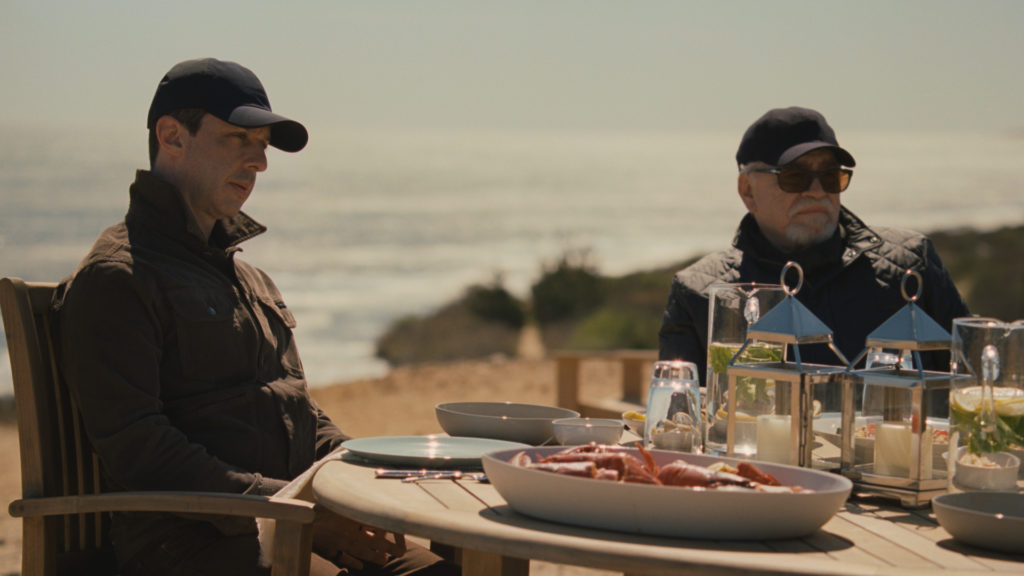
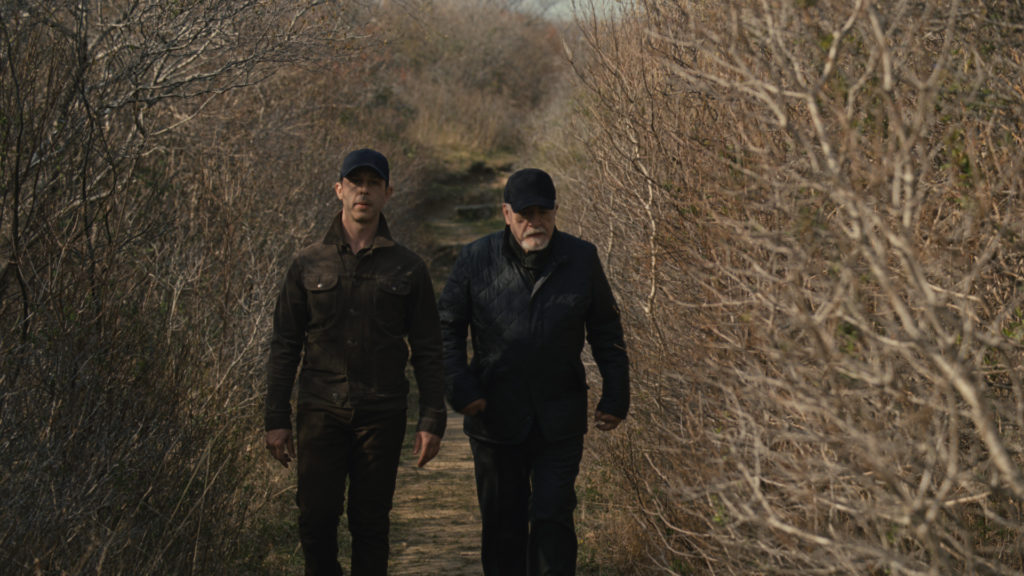
Shot on 35mm negative, underexposure is also used to soften the contrast, and a proprietary film print emulation LUT created for the pilot is still used in the dailies to maintain the look of film. If the cinematographers encounter anything out of the ordinary during a shoot, a clean colour chip or grey card is sent to the colourist. “And if we shoot an unusual scene, we take photos and email them to our fantastic overnight timer, Josh Oliver, explaining what we ran into, what we’re trying to do, and whether or not to override it,” says Capone.
In the grade, Capone and Norr partnered with Light Iron senior colourist Sam Daley, whose involvement began in the pilot when he established the look with Andrij Parekh. “Succession’s camera style is iconic,” says Daley. “Handheld, snap zooms, searching, finding the actors rather than placing the camera in front of them…You’re a fly on the wall watching the Roy family scheme with and against each other. But there are Shakespearean moments as well, so the show’s look is rooted in both realism and classicism.”
Staying true to the analogue tone and texture of film is vital to the look of the series, so Daley approaches the grade as if he is in a telecine environment. “I work hard to find the right primary grade with just offset and lift-gamma-gain. I use secondaries sparingly as too much artifice would distract from the realism. The beauty is already there in the negative, you just have to dial it in and let the story and performances take centre stage.”
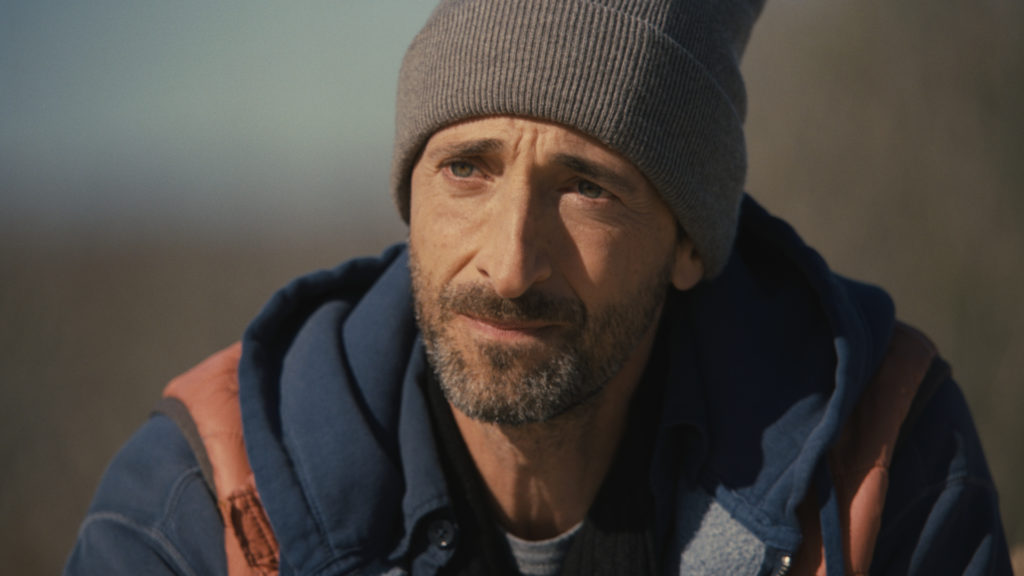

Serving the story
Rather than being governed by practicality, locations need to work for the script and story, with the word on the scout being ‘does it have the bones for the scene?’ And when cities are scoured for some of the series’ more ornate locations, they are often not the focal point on screen. “They kind of exist behind the characters who don’t realise how good they have it when they are in these beautiful places,” says Capone.
Instead of shooting big establishing shots or wides, the characters are the focal point as they move around, with the location “almost subliminal in the background.” Norr adds: “Sometimes a new director might come in and say, ‘Let’s start on the skyline and then find the characters,’ when in fact the skyline would need to be out of focus in the background, in line with the series’ style.”
The show’s aesthetic and some of the locations it visits means the cinematographers frequently maximise contrast to add to the storytelling. “We’re often 37 floors up in an office building and we can’t put up anything outside, so we just play with negative fill and overhead LEDs incorporated into the set to build as much contrast as we can,” says Capone.
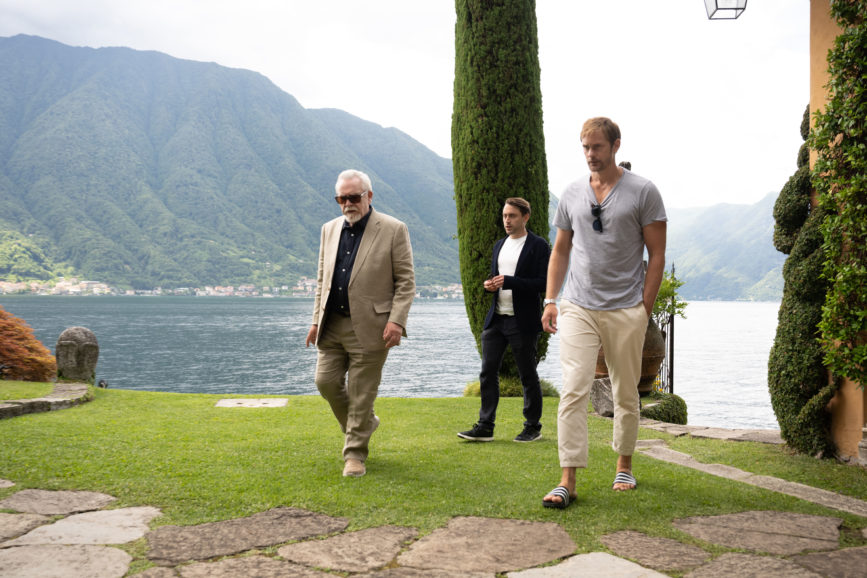
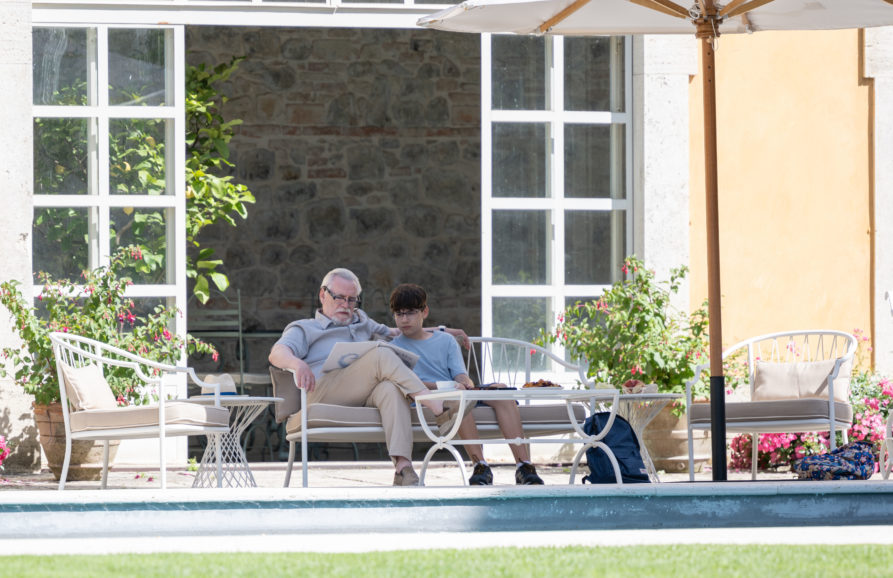
When shooting a lengthy dinner party scene unfolding in a single room in season two’s “Hunting” episode, where media mogul and patriarch of the Roy family, Logan (Brian Cox) locks his team in a room and tries to sniff out a rat, Norr heavily referenced Rembrandt lighting. “In Medieval times, a king might lock those he suspected were betraying him in a room, so Andrij [Parekh] and I talked a lot about applying the classic cinematographers’ reference of Rembrandt lighting and going really Medieval with darker walls and candlelight.”
But outside of the enclosed, claustrophobic, and tension-building office or dining room spaces the action plays out in, the cinematographers try to mix in contemporary New York City night light. Often discussing how New York City is becoming very colourful, “with so many LED practicals within storefronts,” they ty to incorporate that, when possible, in shots such as driving sequences.

Much thought goes into planning a lighting scheme for each space, working closely with the gaffer and rigging crew to determine whether to use top light or light through a window in a way that looks interesting and allows the actors to move around freely. Sometimes that can be challenging, especially in night-time party scenes requiring pinpoint lighting, and restricts the actors’ freedom to move around wherever they want.
One such example which departs from the series’ largely naturalistic colour palette and required a different lighting approach is series three’s “Too Much Birthday”. The episode, lensed by Norr and incorporating an ensemble cast celebrating Kendall Roy’s 40th birthday party in a lavish club, still needed to feel realistic.
Venturing outside of Succession’s regular environments, the episode presented Norr with new challenges which were confronted with the help of production designer Stephen Carter. “It was harder than shooting in an ongoing set like Logan’s apartment,” says Norr. “Multiple extravagant, themed installation-style rooms were built for the party. But as the script constantly changes, the rooms also changed, and Steve adapted to the needs of the script incredibly well.”
The location of Kendall’s 40th birthday celebration – The Shed in Hudson Yards, New York – also called for Norr and gaffer Andy Day to incorporate “rock ‘n’ roll fixtures” such as the moving, colour-changing Martin MAC Viper lights, more commonly used on stage. “This wasn’t because I wanted them moving in the shot. It was to allow me to strategically place them almost everywhere. Not knowing exactly how the script would pan out, this gave me flexibility on the day.”
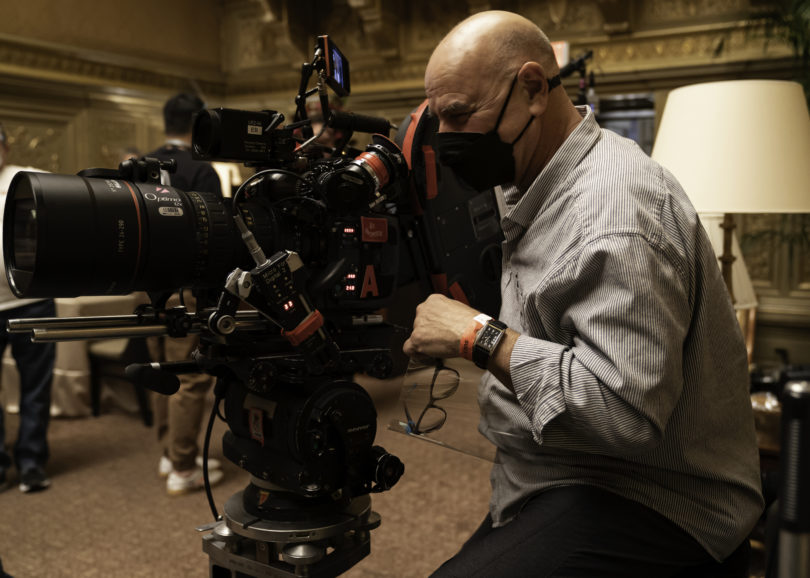
When working at the pace required for a series such as Succession, LED lighting has been “a saving grace” for the crew who embraced its brightness and the ability it offers to control colour. “For the scenes shot in Italy, we worked with the excellent gaffer Elvis Pasqual. He lent us some large LED lights he had that Storaro helped create, called Melpomene from The Muses of Light. As they were bright, powerful, but required little power, they were perfect for sunlight effects coming through windows, and to light the courtyard at night during the bachelorette party scenes.”
The most demanding sequence from series three that Capone lit was the final 20 minutes of its concluding episode, “All the Bells Say”. Beginning in a van, shot late in the day, the scene then sees Shiv, Kendall, and Roman arrive at Logan’s villa at dusk before moving to an interior day for night, to avoid the cast and crew working overnight.
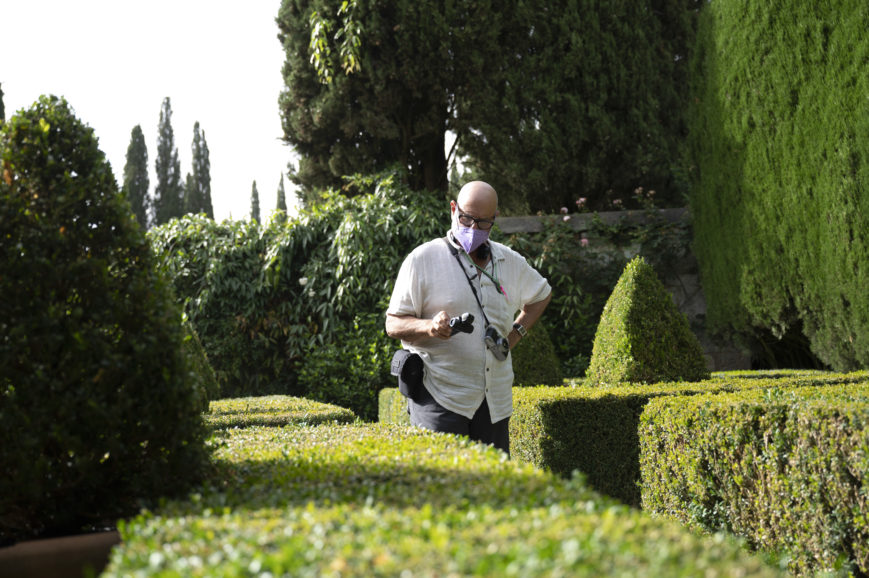
“It was very difficult to get the fixtures into that space and then to get the light we needed off the Venetian plaster walls which we couldn’t paint. Achieve all that within a 10-hour turnaround plus blacking out the windows to make it feel like it’s night outside whilst still getting reflections and some blue light.”
Capone often collects still photographs for reference and to help tackle difficult lighting situations. Since season two he has studied the work of White House photographers who are not able to light anything, yet still need to document important people. “When we started shooting the Roy family on planes, I wanted to see how photographers captured people boarding Air Force One. These images gave me an idea of what we could do when utilising the window light and using longer lenses.”
Keeping an open mind, constantly learning, and reinventing themselves have been vital parts of Capone and Norr’s careers in cinematography. Some of their best work on the series has been produced through spontaneity and passion and “not being set in our ways.”
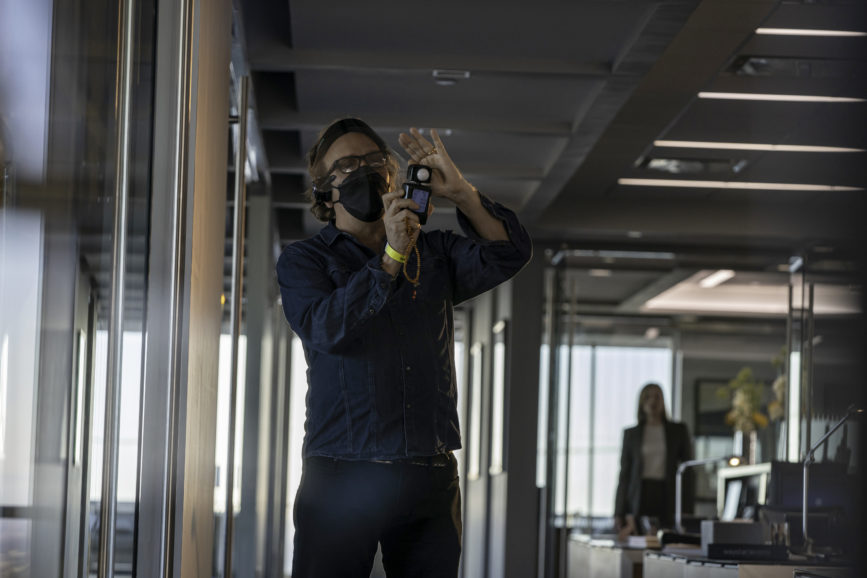
And it was Succession’s unrestricted method of working, combined with vibrant dialogue and an openminded cast that produced one of the series’ most powerful scenes, which Capone is proud to have been part of. “I’m particularly impressed by Kendall’s confession scene in Italy in the final episode. Jeremy [Strong] was open to adapting on the fly. We had looked at the location for days and at first he was going to sit on the wall in the shade. But then he spontaneously sat on the ground in broad daylight, and the camera crew and actors danced around the sun. The operators did a phenomenal job, the cast was phenomenal, and I’m very proud of the camerawork.
“There are so many dynamic relationships and incredible performances like that which really make the series. The actors never stop; they love it as it’s like a play. And they’re always making each take better than the last. We all get rewards from that, from the actors and directors through to the camera crew and ultimately the audience.”
